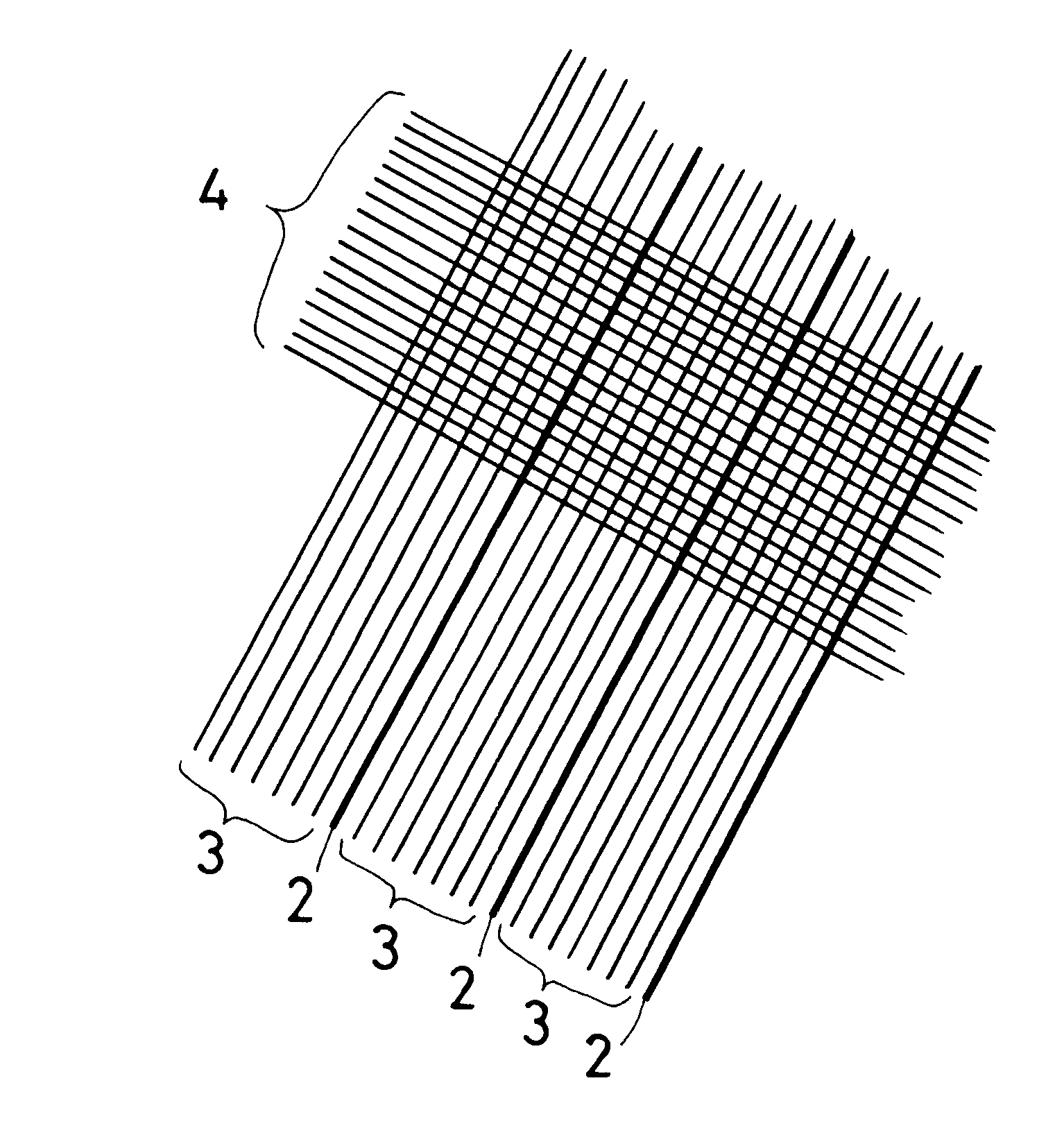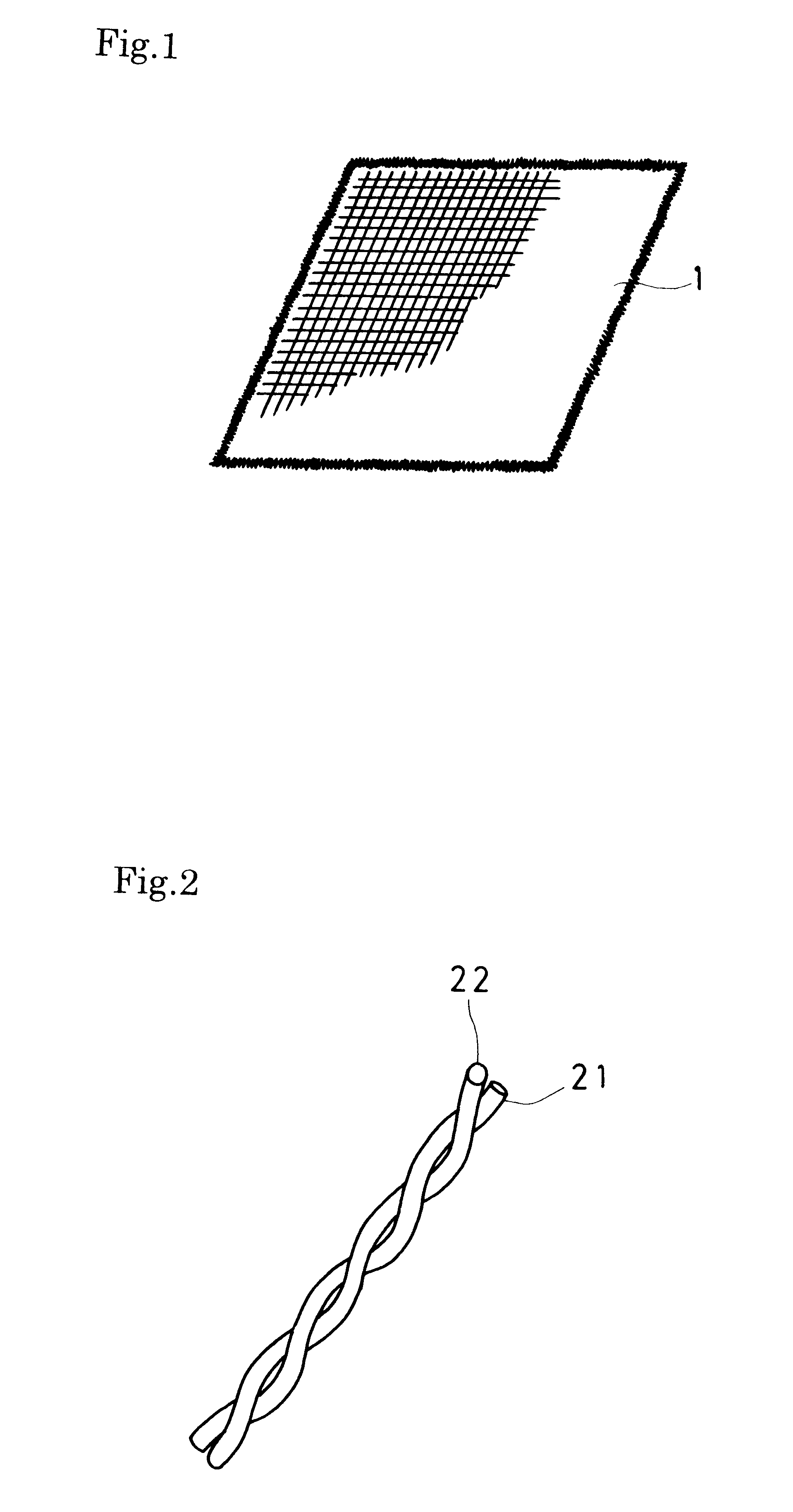Food wrapping cloth
a technology for wrapping cloth and food, applied in textiles and paper, containers preventing decay, synthetic resin layered products, etc., can solve the problems of injuring users, heavy and hard antibacterial cloth, and difficult to wash cloth
- Summary
- Abstract
- Description
- Claims
- Application Information
AI Technical Summary
Benefits of technology
Problems solved by technology
Method used
Image
Examples
Embodiment Construction
(1) Production of antibacterial yarn and twist yarn
An antibacterial yarn was produced by depositing silver ion on a polyester film (produced by Toyobo Co.,Ltd.) of 30 microns in thickness by ion deposition and cutting to be a fine and long yarn of 0.5 mm in width. Then, a twist yarn was produced by winding the antibacterial yarn 300 times per meter round a 30 count rayon yarn and twisting.
(2) Production of Food Wrapping Cloth
The twist yarn produced in the foregoing (1) and the 30 count rayon yarn were warped with an interval of 5 mm so that 7 twist yarns and 43 30 count rayon yarns are respectively arranged per inch in cloth width.
Yarns of 20 count lyocel(not defined) (trade name(registered trademark): Tencel produced by Tuzuki Boseki Co.,Ltd.) were woven as weft by automatic weaving machine so that 50 yarns are arranged per inch in cloth width, thereby a fabric being obtained.
(3) Antibacterial Performance Test
An antibacterial performance test was carried out by the Osaka Food Hygie...
PUM
| Property | Measurement | Unit |
|---|---|---|
| width | aaaaa | aaaaa |
| thickness | aaaaa | aaaaa |
| width | aaaaa | aaaaa |
Abstract
Description
Claims
Application Information
 Login to View More
Login to View More - R&D
- Intellectual Property
- Life Sciences
- Materials
- Tech Scout
- Unparalleled Data Quality
- Higher Quality Content
- 60% Fewer Hallucinations
Browse by: Latest US Patents, China's latest patents, Technical Efficacy Thesaurus, Application Domain, Technology Topic, Popular Technical Reports.
© 2025 PatSnap. All rights reserved.Legal|Privacy policy|Modern Slavery Act Transparency Statement|Sitemap|About US| Contact US: help@patsnap.com



